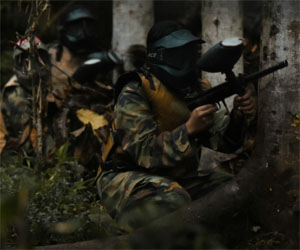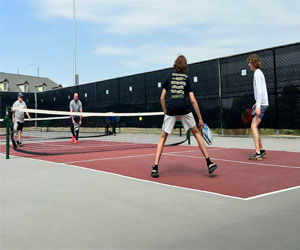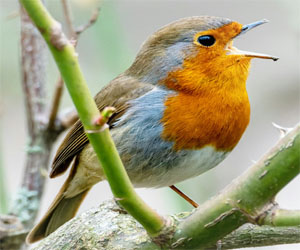



The call of the wild and the thrill of outdoor exploration have been driving adventurers and nature enthusiasts for centuries. Whether you're a seasoned outdoor enthusiast or someone looking to escape the confines of urban living, the promise of adventure and the unknown is an irresistible allure that beckons us to explore the great outdoors.
One of the most exhilarating aspects of outdoor exploration is the opportunity to break free from the mundane routines of modern life. In the wild, the cacophony of city life is replaced by the soothing sounds of rustling leaves, babbling streams, and the melodies of birds. The thrill of outdoor exploration allows us to leave behind the digital noise, disconnect from the constant stream of notifications, and immerse ourselves in the serenity of nature.
Outdoor exploration unveils the beauty and wonder of the natural world. It's a chance to wander through pristine forests, scale rugged mountain peaks, or paddle across tranquil lakes, all while taking in the breathtaking scenery and the awe-inspiring landscapes that nature offers. Whether you're watching the sun set over a canyon, witnessing a cascading waterfall, or stargazing under a clear night sky, the grandeur of the natural world becomes a playground for your senses.
The allure of outdoor exploration is deeply rooted in the pursuit of the unknown and the challenge of the wild. Hiking along winding trails, navigating through dense forests, or ascending rocky peaks all demand adaptability, resourcefulness, and courage. These challenges push your boundaries and provide a sense of accomplishment that is hard to find elsewhere.
Outdoor exploration encourages us to reconnect with our most primal instincts. As we set out on expeditions and embark on adventures, we become more attuned to the environment, listening to the rhythm of the earth, smelling the scent of the forest, and feeling the solid ground beneath our feet. This sensory experience allows us to reconnect with the world in a profound and meaningful way.
The thrill of outdoor exploration also offers an escape from the digital world. With limited or no connectivity, we find ourselves free from the constant barrage of screens and notifications. Instead, we engage in face-to-face conversations, immerse ourselves in nature, and bask in the solitude of the wilderness.
Moreover, outdoor exploration often leads to a deep appreciation for the environment and a greater sense of responsibility towards its preservation. As we explore the wonders of the natural world, we come to understand the importance of conservation and the need to protect these precious landscapes for future generations.
The thrill of outdoor exploration is an open invitation to embark on a journey of discovery, adventure, and wonder. It's an opportunity to break free from the noise of urban life, immerse oneself in the natural world, and face the exhilaration of nature's challenges head-on. Whether you're an experienced outdoor enthusiast or a novice, outdoor exploration offers a unique opportunity to reconnect with the environment, experience the thrill of adventure, and explore the wonders of the great outdoors. It's a reminder that there is a world of excitement beyond our daily routines, waiting for those who dare to venture into the wild. So, heed the call of the unknown and experience the thrill of outdoor exploration for yourself.
More Than Just A Game
 While Ultimate Frisbee is celebrated for its emphasis on sportsmanship, the competitive side of the sport should not be underestimated. As the sport has grown and matured, players have honed their skills, developed advanced strategies, and pushed the boundaries of athleticism. Competitive Ultimate showcases the sport's evolution from a casual pastime to a serious athletic endeavor.
While Ultimate Frisbee is celebrated for its emphasis on sportsmanship, the competitive side of the sport should not be underestimated. As the sport has grown and matured, players have honed their skills, developed advanced strategies, and pushed the boundaries of athleticism. Competitive Ultimate showcases the sport's evolution from a casual pastime to a serious athletic endeavor.
One of the defining features of competitive Ultimate is the level of physicality involved. Players often engage in intense sprinting, jumping, and diving to make plays or defend against their opponents. The sport's fast-paced nature demands not only speed and agility but also endurance and strength. Competitive players are in top physical condition, allowing them to perform at their best throughout a match that can last up to 90 minutes or more.
Strategic gameplay is another hallmark of competitive Ultimate. Teams employ a variety of offensive and defensive strategies to gain an edge over their opponents. Offense focuses on precise throws, timed cuts, and well-coordinated teamwork to advance the disc down the field and score points. On the defensive side, players employ zone defenses, person-to-person marking, and strategic positioning to thwart their opponents' advances.
Competitive Ultimate also emphasizes mental acuity. Players must possess an in-depth understanding of the sport's rules and strategies, making split-second decisions about when to pass, cut, or defend.
Identifying Birds In The Wild
 Field Marks: Bird identification often begins with field marks, which are distinctive physical characteristics. These may include a bird's size, shape, coloration, markings, beak shape, and the pattern of its wings and tail. For example, the size and shape of a bird can help you distinguish a robin from a sparrow.
Field Marks: Bird identification often begins with field marks, which are distinctive physical characteristics. These may include a bird's size, shape, coloration, markings, beak shape, and the pattern of its wings and tail. For example, the size and shape of a bird can help you distinguish a robin from a sparrow.
Plumage And Colors: Observing a bird's plumage, or feathers, is a key aspect of identification. Look for unique color patterns on a bird's head, back, wings, and underparts. These colorations can vary widely among species, such as the vibrant red of a cardinal or the iridescent blue of a jay.
Behavior And Habitat: The behavior and habitat of a bird can provide valuable clues for identification. Some species are known for their distinctive behaviors, such as the woodpecker's habit of tapping on trees. Birds are also often associated with specific types of environments, like wetlands, forests, or grasslands.
Tools For Bird Identification:
Binoculars: A good pair of binoculars is essential for getting a closer look at birds in the wild. They allow you to discern fine details and field marks that might be indistinct to the naked eye.
Field Guides: Field guides are books or digital resources that provide detailed information on bird species. They contain illustrations, photographs, range maps, and descriptions that can help you identify birds based on their physical characteristics and habitat.
Apps And Websites: In the digital age, there are numerous bird identification apps and websites that offer comprehensive databases, bird calls, and interactive tools to assist in recognizing and learning about different bird species.
Audio Guides: Bird vocalizations, such as songs and calls, are crucial for bird identification. Audio guides or smartphone apps that provide bird sounds can be indispensable in determining the species you're observing.
The Crucial Role Of Team Dynamics In Paintball
 The Power Of Team Dynamics In Paintball
The Power Of Team Dynamics In Paintball
Team dynamics encompass the interactions and coordination between paintball players. Whether you're a seasoned pro or a novice, the way your team functions can significantly impact your performance and the outcome of the game.
Here's why team dynamics matter:
Strength In Numbers: Paintball is a team sport, and the synergy between teammates is crucial. A well-coordinated team can overcome individual weaknesses, outmaneuver opponents, and achieve victory.
Effective Communication: In paintball, communication is the lifeline of teamwork. Sharing information about enemy positions, plans, and actions helps the team adapt and respond to the evolving situation.
Cover And Support: Teammates can provide cover fire and support, creating opportunities for their allies to advance, reload, or take strategic positions. This teamwork is essential for maintaining control on the battlefield.
Strategic Combinations: Teams can devise strategies that involve various roles, such as snipers, assault players, and defenders, working in tandem to achieve a common goal. Combining these roles strategically is a hallmark of effective team dynamics.
Unity And Morale: A cohesive team fosters unity and high morale, which, in turn, boosts confidence and motivation. This positive atmosphere can lead to better decision-making and performance.
Key Aspects Of Effective Team Dynamics
Communication: Open and clear communication is the cornerstone of effective team dynamics. Players should use radios, hand signals, or verbal cues to convey vital information to their teammates.
Roles And Responsibilities: Define roles within the team based on each player's strengths and preferences.






The Timeless Appeal Of Riding The Waves
 Physical Fitness And Wellness: Surfing is a sport that promotes physical fitness and well-being, making it an excellent choice for individuals of all ages. Paddling out to the lineup, maintaining balance on the board, and riding the waves require cardiovascular endurance, strength, and flexibility. Surfing provides a full-body workout that helps keep surfers in shape and supports a healthy lifestyle, regardless of age.
Physical Fitness And Wellness: Surfing is a sport that promotes physical fitness and well-being, making it an excellent choice for individuals of all ages. Paddling out to the lineup, maintaining balance on the board, and riding the waves require cardiovascular endurance, strength, and flexibility. Surfing provides a full-body workout that helps keep surfers in shape and supports a healthy lifestyle, regardless of age.
Mental Well-Being: Surfing isn't just about physical fitness; it also nurtures mental well-being. The calming sound of the ocean, the feel of the saltwater, and the meditative quality of waiting for the perfect wave contribute to a sense of peace and relaxation. Surfing allows individuals to escape from the daily stresses of life, offering a form of natural therapy for people of all ages.
Adaptability To Skill Levels: Surfing is remarkably adaptable to different skill levels.
 Rest And Immobilization: In many cases, rest and immobilization are necessary to allow the body to heal. This might involve using crutches, slings, or braces. The duration of rest depends on the injury, but it's crucial not to rush back into physical activity.
Rest And Immobilization: In many cases, rest and immobilization are necessary to allow the body to heal. This might involve using crutches, slings, or braces. The duration of rest depends on the injury, but it's crucial not to rush back into physical activity.
Physical Therapy: Physical therapy is often a cornerstone of sports injury recovery. A physical therapist can design a personalized plan to strengthen muscles, improve mobility, and restore functionality. They guide athletes through exercises that target the affected area.
Pain Management: Managing pain is a critical aspect of recovery. This may involve over-the-counter pain relievers or prescribed medications. However, athletes should follow their healthcare provider's advice on pain management to avoid potential risks.
Rehabilitation Exercises: Incorporating rehabilitation exercises into the recovery plan helps in restoring strength and flexibility. These exercises are progressive, gradually increasing in intensity as the injury heals. Athletes should perform them under the supervision of a physical therapist or trainer.
Nutrition And Hydration: A well-balanced diet rich in nutrients is essential for the body's healing process. Adequate protein, vitamins, and minerals support tissue repair and growth. Staying hydrated is equally crucial.
Gradual Return To Activity: Athletes must follow a gradual return-to-sport plan. Rushing back into strenuous activity can lead to reinjury. This plan should be developed with a healthcare provider or trainer and include a step-by-step progression.